Lets start this off by saying that HLM is not a novice program. No matter how strong you think you are, if you have never ran through a simple linear progression on the basic barbell lifts, you will get stronger much quicker by doing that than anything you will read in this article.
The goal here is to explain what we do with certain people when they finish up a novice LP. A Heavy-Light-Medium (HLM) program provides a pretty good early-intermediate way to design weekly increases. Not all of our members use this template, but it can be very useful if used appropriately. It’s a basic framework that can be applied to athletes, older folks, and everyone in-between.
THE BASICS
Our first foray into HLM began with Bill Starr’s Strongest Shall Survive. In it, Starr gives a very good description of what and why he did as a strength & conditioning coach. The basics are that he had his team do ascending sets of 5 with little rest on the power clean, squat, and bench press. If you read the book, he explains the limitations he was facing and how that influenced exercise selection and programming.
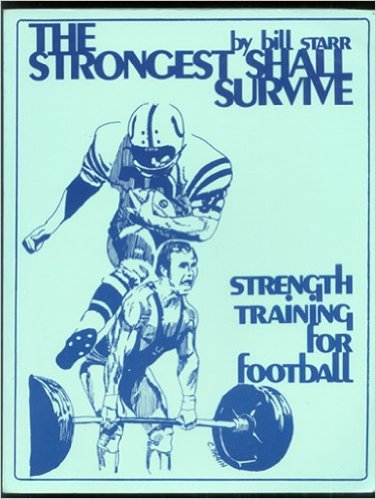
The average person at our gym, however, does not face these same limitations. So we were able to run with the program a bit and apply it a bit differently.
“ASCENDING 5’s”
This is the basic program we began with, and one that a lot of our people have had success with. For the novice coming off an LP, it provides a nice boost in volume without being quite as grueling as, say, the Texas Method.
The “Ascending 5’s” part comes from the rep scheme of each lift. We do sets of five at 60%, 70%, 80%, 90% and 100%. The first four sets are done with little to no rest. Whatever it takes for you to change the plates. Before the last heavy set, that person does their normal 4-5 minute rest. This allows a lot of volume to be done quickly, which is perfect for anybody on a time crunch. I remember reading that Starr had some of his Baltimore Colts players go through their light day in 15-20 minutes.
A sample squat workout looks like this:
185×5
215×5
245×5
275×5
^All done without much rest
Rest 5 minutes, then hit 305×5.
The weekly layout looks like this:
Monday – Heavy
Squat – 100%
Bench – 100%
Deadlift – 100%
Wednesday – Light
Squat – 80% (base your %’s off 80% of whatever you did Monday)
Press – 100%
Deadlift – 80%
Friday – Medium
Squat – 90%
Bench – 90%
Deadlift – 90%
Now if you’re just coming off a novice LP, your first thought is probably “sweet mother of deadlift volume!” It’s a lot, especially coming off a program that does one or two sets of five per week. This is why for some people we go to the next section, in which we take some pulling volume away.
ASCENDING 5’S WITH TONED-DOWN VOLUME
Nothing changes too much. We just swap out some of the pulling from the floor to decrease deadlift frequency and volume. We still keep the heavy day, but put in other pulls that are inherently lighter.
Monday – Heavy
Squat – 100%
Bench – 100%
Deadlift – 100%
Wednesday – Light
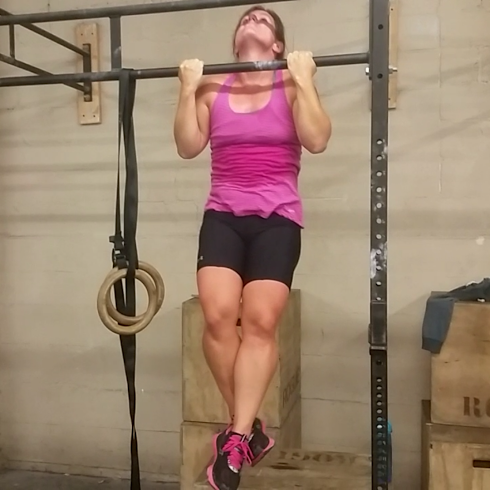
Squat – 80% (base your %’s off 80% of whatever you did Monday)
Press – 100%
Chins
Friday – Medium
Squat – 90%
Bench – 90%
Deadlift – 80% (or any other lighter variation that may work on weaknesses, such as a paused DL)
“ASCENDING 5’S” FOR ATHLETES
Early-intermediate athletes need to get stronger while doing the Olympic lifts. So we take some of the pulling volume and put it in as cleans and snatches. For most of our athletes we replace the light day squat with front squats.
Some of our athletes Jerk, while others don’t. It’s simply a matter of prioritizing time in the gym. If the athlete is going to struggle with it, I would rather save time and energy by doing something more productive. The only exception is if the athlete is going away to a S&C program that will have them perform the jerk. In which case we teach them now, so they don’t have the chance to learn incorrectly at school (which saves us lots of time the next year when we have to fix everything).
We add in conditioning on the light and medium days, making sure not to program something that’s going to mess up their lifts. Things like sled pushes, assault bike sprints, sled drags, and carries that don’t create a whole lot of DOMS.
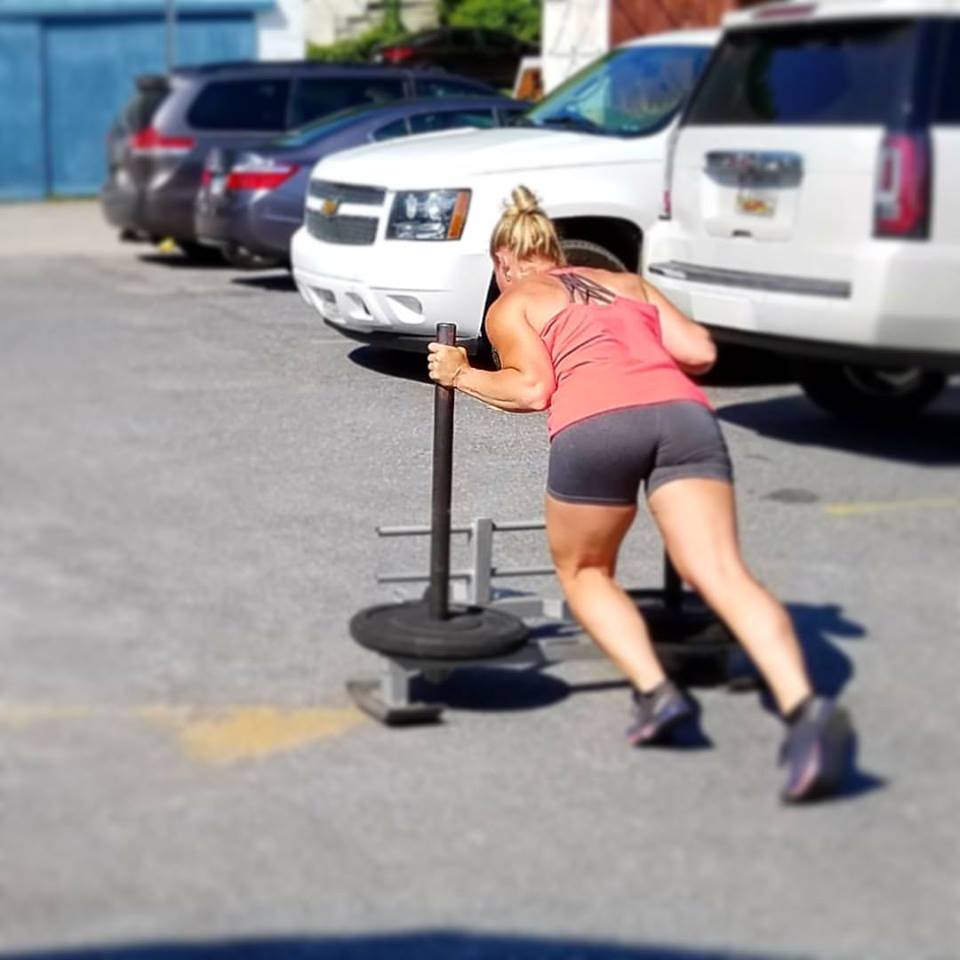
Monday – Heavy
Squat – 100%
Bench – 100%
Deadlift – 100%
Wednesday – Light
Front Squat – 3×3 or 5×3
Press – 100%
Snatch – singles or doubles
Conditioning
Friday – Medium
Squat – 90%
Bench – 90%
Power Clean – singles, doubles, or triples
Conditioning
“RUNNING OUT” ASCENDING 5’S
Eventually you won’t be able to add 5 pounds to your lift each week, and you have to get somewhat fancy. You can eek out a few more weeks/months of progress on this program by changing the top set of each lift while keeping the first four sets the same. For instance, if you are stuck on a 225×5 squat, your first week might look like:
135×5, 155×5, 185×5, 205×5, 230x3x2.
By hitting 230 for two triples, you essentially keep volume the same while still pushing the weight up a bit. We have had people cycle through the following rep schemes for a few months, spending one week on each before starting over at the top of the list.
1×5
2×3
3×2
5×1
Once you run through this a couple times, it’s time to move on to a different program.
FOR IN-SEASON ATHLETES
While multiple sets of 5 are optimal for most lifters, it can beat up some athletes when they are in-season (or if their season lasts year-round). A lot of our athletes seemingly have a weekend tournament every weekend throughout the year and they need to be somewhat fresh to perform each weekend. This setup provides a nice stimulus at the beginning of the week, while the lower reps on Friday have them not feeling so beat-up from volume. This isn’t HLM weight-wise because your triples on Friday will be heavier than your 5’s on Monday, but the overall volume is lower than Monday’s workout . So the week’s stress still follows a HLM template.
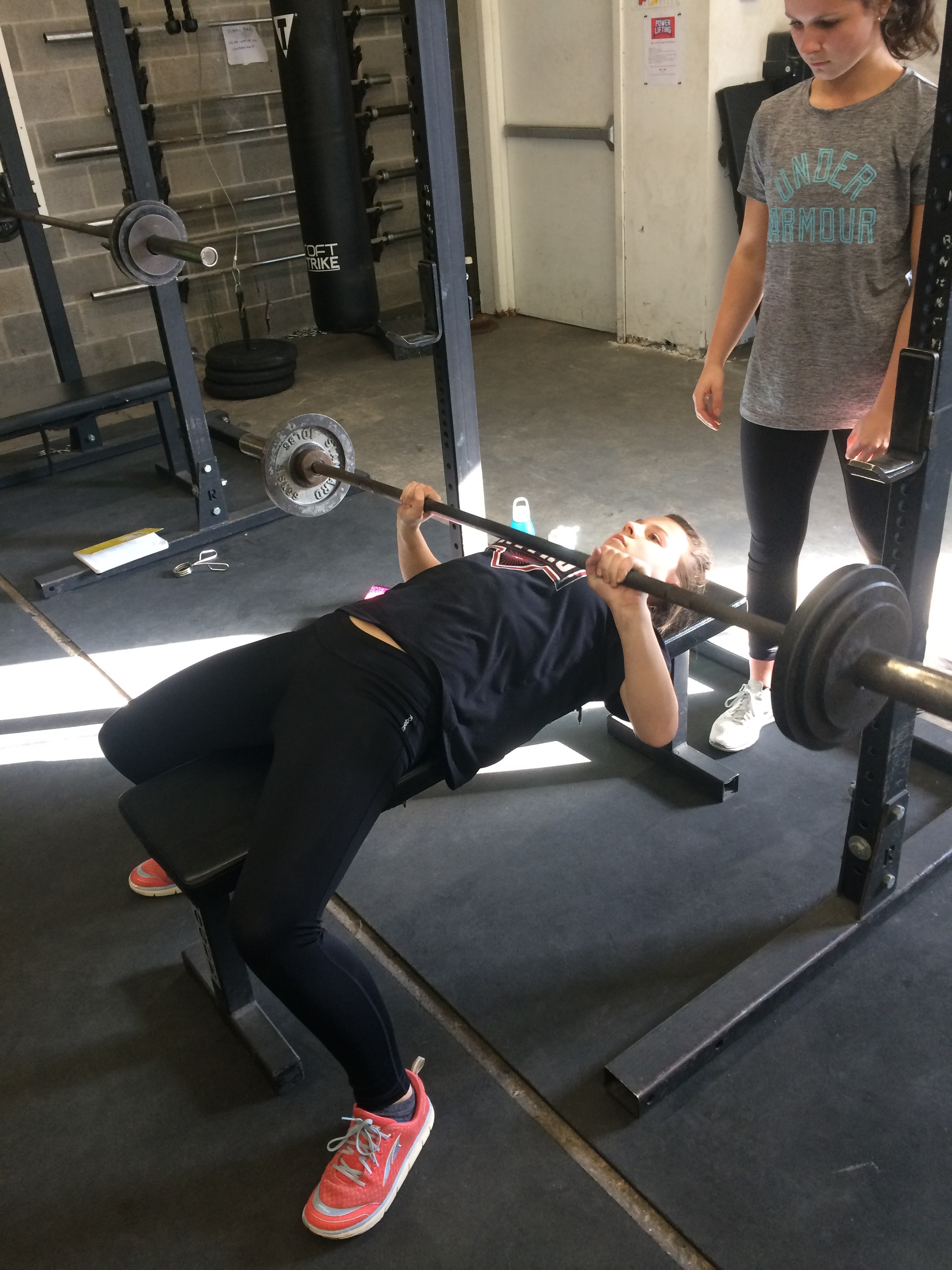
We’ve found this program to be really good for younger athletes (12-14 years old) who burn through an LP real quick. It gives them enough exposure to everything without being completely random, and is simple enough that their brains can understand it.
Monday – Heavy
Squat – 1×5, then back off 5% for 2-4 more sets
Bench – 1×5, then back off 5% for 2-4 more sets
Deadlift – 1×5, then maybe a back-off set or two
Wednesday – Light
Front Squat – 3×3
Press – 1×5 or 1×3, then back off 5% for 2-4 more sets
Snatch – Work up to a few heavy singles
Friday – Medium
Squat – 1×3, then back off 5% for 1-2 more sets
Close-grip Bench – 1×3, then back off 5% for 1-2 more sets
Clean+Jerk – Work up to a few heavy singles
WITH MORE OLYMPIC LIFTING
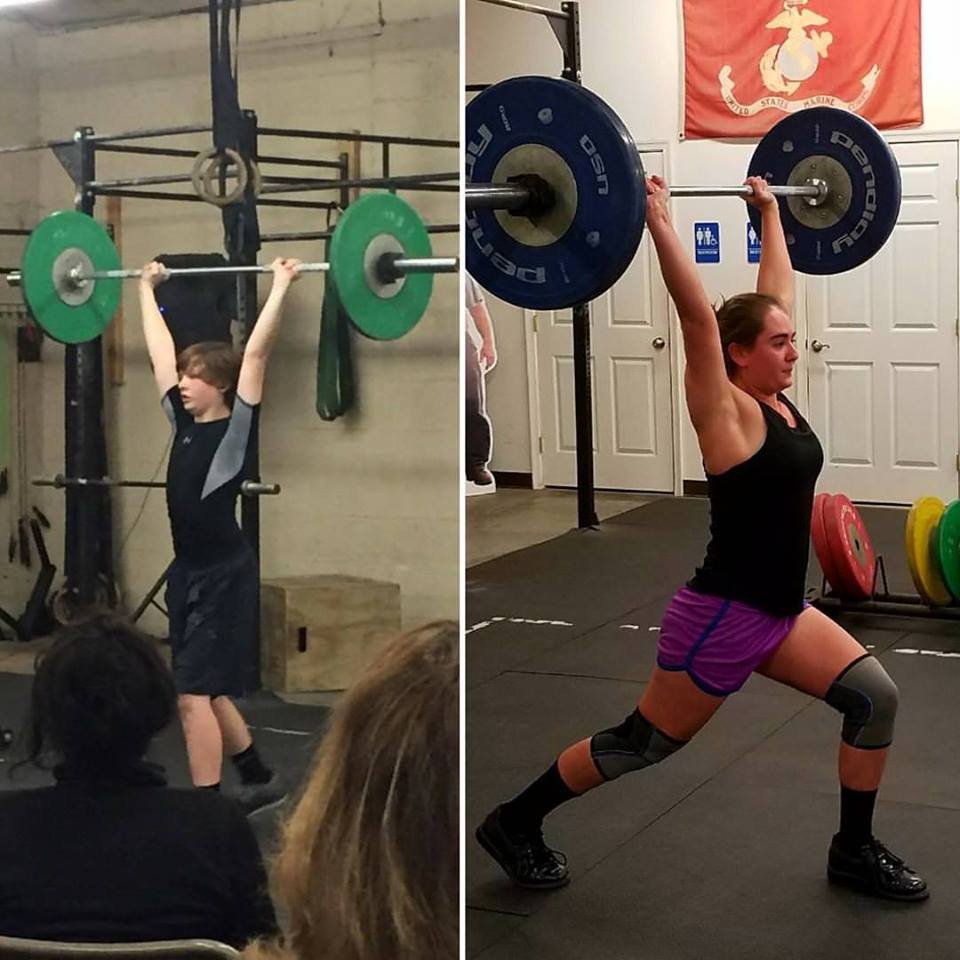
We have a few kids at the gym who play team sports but also enjoy the Olympic lifts. A few of them competed in a developmental weightlifting meet recently, so we simply took their normal program and added a little more exposure to the snatch and clean+jerk. They still got stronger while practicing the Olympic lifts more. Win-Win.
Monday – Heavy
Squat – 1×5, then back off 5% for 2-4 more sets
Bench – 1×5, then back off 5% for 2-4 more sets
Deadlift – 1×5, then maybe a back-off set or two
Wednesday – Light
Snatch – Find a heavy single
Clean + Jerk – 5-10 singles at 80% of last heavy day
Front Squat – 3×3
Press – 1×5 or 1×3, then back off 5% for 2-4 more sets
Friday – Medium
Clean+Jerk – Find a heavy single
Snatch – 5-10 singles at 80% of last heavy day
Squat – 1×3, then back off 5% for 1-2 more sets
Bench – 1×3, then back off 5% for 1-2 more sets
FOR OLDER FOLKS
We take the same template but change it up to reduce squatting frequency. Because squatting and pulling in the same day can be a bit much, we move deadlift to the light squat day. When 5’s beat the person up too much, we drop to 3’s to keep pushing intensity while backing off in volume. The prowler day immediately after Heavy day helps loosen things up a bit while still adding in some leg volume.
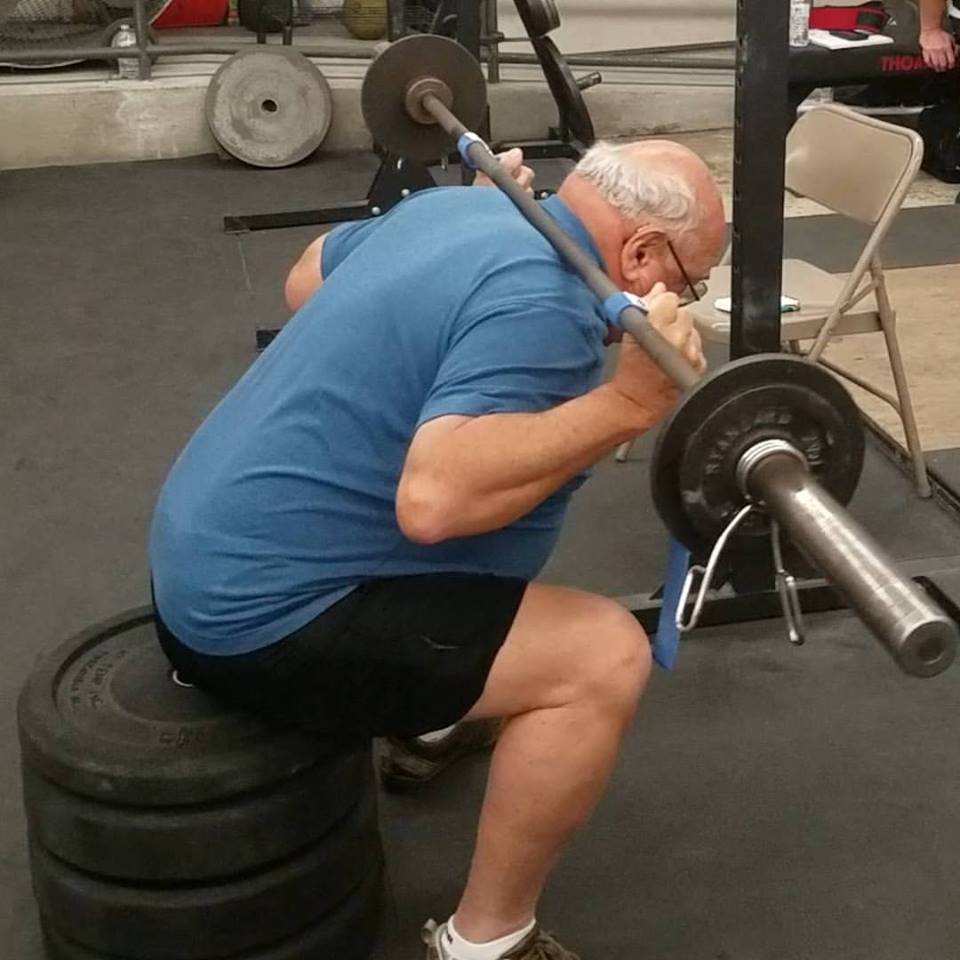
Monday – Heavy
Squat – 1×5, then back off 5% for 1-2 more sets
Bench – 1×3 or 1×5, then back off 5% for 2-4 more sets
Tuesday – Light
Chins or rows – 3 sets
Prowler
Friday – Medium
Squat – 70-80% of Wednesday’s weight for a few sets of 5
Press – 1×3 or 1×5, then back off 5% for 2-4 more sets
Deadlift – 1×3 or 1×5, then back off 5% for one set
HLM WITH DROP SETS FOR VOLUME
We take the same template as the “Ascending 5’s”, and apply it to a one-heavy-set-with-backoffs program. Some people we feel aren’t suited to doing a bunch of sets of 5. Others are really bad at math and would mess percentages up all the time. Either way, the main thing that changes the weekly stress here is exercise selection. We pick exercises that are inherently lighter and stick with a rep scheme for a few weeks before changing to a new one. 6/4/2 is one rep-cycle that seems to work well for most people.
Monday – Heavy
Squat – 1×6, then drop 5% for 2-3 more sets
Bench – 1×6, then drop 5% for 2-3 more sets
Deadlift – 1×6, then drop 5% for 2-3 more sets
Wednesday – Light
Squat – 80% (base your %’s off 80% of whatever you did Monday)
Press – 1×6, then drop 5% for 2-3 more sets
Chins or Rows
Friday – Medium
Pause Squat – 1×6, then drop 5% for 2-3 more sets
Pause Bench – 1×6, then drop 5% for 2-3 more sets
Pause DL (or any other DL assistance that lowers the weight on the bar) – 1×6, then drop 5% for 2-3 more sets
WRAPPING IT UP
There are thousands of different ways to set up a program like this. These are just a few that we have had success with. The most important aspect of every single person that has had success on these programs is that they showed up every day, worked hard, and watched their nutrition. Without attendance and effort in the gym and at home, it doesn’t matter what special program you’re doing.
Tags: Athlete, Conditioning, HLM, squat, Starr, Starting Strength, Strength, Training
Great template for moving forward !!!
awesome stuff, thank you for writing this up. I have one question regarding the “RUNNING OUT” ASCENDING 5’S…
in your example you have 135×5, 155×5, 185×5, 205×5, 230x3x2
what would the following week looks like?
135×5, 155×5, 185×5, 205×5, 235x3x2 ?
135×5, 155×5, 185×5, 205×5, 230x5x1 ?
Thanks!
You could either go up 5# and stick with triples for a few weeks, or add a little more and do doubles (maybe 240-250 depending on the lift).
so on the ascending 5s are percentages for wednesday and tuesday based on a 100% 5 rep max of each lift on Monday that goes up by 5 lbs each week ?
For the older guys Fridays squat says 70-80% of Wednesday’ s squat but there is no Wed workout?